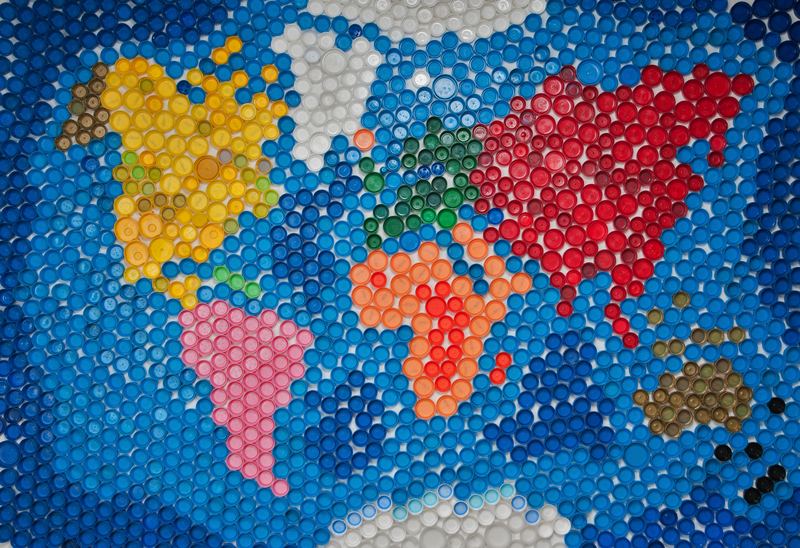Safeguarding Nature by Disposing of PPE Waste Correctly
PPE waste - including masks, gloves, face shields, and gowns - has become an everyday part of our lives. While these items are vital for keeping people safe from diseases and environmental hazards, their improper disposal is threatening the very environment we aim to protect. In this comprehensive guide, you'll find out why it's crucial to dispose of personal protective equipment (PPE) responsibly and how you can contribute to safeguarding nature by managing PPE waste the right way.

Understanding PPE Waste: What's the Impact on Nature?
The use of PPE has skyrocketed in recent years, especially since the onset of the COVID-19 pandemic. As a result, cities, rivers, oceans, and even remote natural spaces are now facing a waste crisis stemming from improperly discarded masks and gloves. Before we delve deeper, let's explore why correct PPE waste disposal is essential for environmental protection.
Types of PPE Waste
- Cotton and surgical masks
- Nitrile, latex, and vinyl gloves
- Disposable gowns and protective coverings
- Face shields and goggles
- Shoe covers
Most of these are made from synthetic plastic-based materials that do not biodegrade easily, persisting in the environment for up to 450 years.
Environmental Problems Caused by Improper Disposal
- Marine Pollution: Oceans and waterways are becoming dumping grounds for millions of PPE items. Marine creatures often mistake these for food, leading to injuries or fatalities.
- Wildlife Hazards: Birds and animals can become entangled in elastic bands or ingest pieces of plastic from PPE, disrupting food chains and harming entire populations.
- Litter in Landscapes: Populated areas, parks, and forests are seeing increased litter from single-use masks and gloves, detracting from natural beauty and introducing toxins to soil and water.
- Microplastic Generation: Over time, PPE items break down into microplastics, which leach harmful chemicals and enter the bodies of humans and animals alike.
How Does Proper PPE Waste Disposal Safeguard Nature?
Disposing of PPE responsibly is one of the simplest and most effective ways for individuals and communities to reduce their ecological footprint. Here's how:
- Prevents Spread of Disease: Medical PPE can harbor viruses and bacteria. Proper disposal minimizes the risk of contamination for both humans and wildlife.
- Protects Wildlife: Animals cannot differentiate between waste and food. Safe disposal keeps PPE out of habitats.
- Reduces Plastic Pollution: Correct waste management can prevent plastics from entering natural ecosystems and contributing to microplastic buildup.
- Maintains Clean Environments: Disposing of PPE in dedicated bins and facilities preserves the cleanliness and beauty of natural areas.
Global PPE Waste Statistics and Their Significance
Did you know that it's estimated over 129 billion face masks and 65 billion gloves are used worldwide every month? This staggering amount highlights the growing PPE waste challenge. Urban centers and coastal zones are especially at risk of environmental degradation due to these numbers.
The proper management and safe disposal of PPE waste is not just an environmental concern; it's a public health imperative. If handled incorrectly, PPE can become a vector for infectious disease transmission as well as environmental damage.
Correct Methods for Disposing PPE Waste
Not all PPE waste should be treated the same way as household garbage. To safeguard nature by disposing of PPE waste correctly, follow these best practices:
1. Segregate PPE Waste from Regular Waste
- Always separate used PPE (e.g., masks, gloves) from household recyclables and trash.
- Keep a dedicated PPE bin lined with a sturdy bag.
2. Use Proper Bags and Bins
- Use thick, leak-proof bags to avoid contamination.
- Ensure the bin has a lid and is clearly labeled as "PPE Waste."
- In public spaces, utilize marked PPE disposal bins if available.
3. Handle with Care and Safety
- Wash your hands before and after disposing of PPE items.
- Do not touch your face while handling used PPE.
- Disinfect the exterior of the waste bag if possible.
4. Secure and Dispose Appropriately
- Tie the waste bag tightly before discarding.
- Do not overfill bags to minimize the risk of spillage.
- Follow local council or municipal waste management guidelines for PPE waste.
5. Never Flush PPE Down the Toilet
- Flushing masks or gloves can block sewage systems and contaminate water supplies.
6. Support Specialized Collection Programs
- Some areas have dedicated pickup services or drop-off points for PPE waste. Use these whenever possible.
- If your community lacks this service, voice your concern to local authorities and ask for better infrastructure.
Sustainable Alternatives to Traditional PPE
Reducing the volume of disposable PPE can greatly decrease its environmental impact. While some situations require single-use items for safety, there are times when alternatives are viable.
- Reusable Masks: Washable fabric masks can replace single-use masks for the general public, especially outside of medical settings.
- Biodegradable PPE: Some manufacturers are now making PPE from biodegradable materials like corn starch, bamboo, or other plant fibers.
- Proper Care: Taking care of reusable PPE extends its life and minimizes waste.
Advantages of Switching to Sustainable PPE
- Lowers the burden on landfills and incinerators
- Decreases the likelihood of plastic pollution in nature
- Cost-effective in the long run
- Reduces demand for fossil-fuel-based products
The Role of Governments and Communities in PPE Waste Management
While individual action is critical, governments and communities play a large part in ensuring effective PPE waste disposal. Here's how collaborative efforts can make a difference:
- Public Awareness Campaigns: Informing citizens about the dangers of littering PPE and how to dispose of it correctly helps foster more sustainable habits.
- Infrastructure Development: Installing special collection bins in public places and ensuring regular collection is key to managing PPE waste.
- Regulation and Policy: Enacting legislation for PPE waste segregation and eco-friendly alternatives can incentivize both businesses and individuals to adapt.
- Research and Innovation: Governments should support research into sustainable PPE materials and effective recycling/disposal technology.
The Importance of Recycling and Reprocessing PPE Waste
Recycling traditional PPE is a significant challenge due to contamination and mixed-material composition. However, innovative approaches are emerging:
- Industrial Recycling Programs: Some companies are developing processing facilities capable of cleaning and recycling plastic-based PPE waste into construction materials or fuel.
- Material Recovery: Hospitals and industries can segregate large volumes of uncontaminated PPE, which can be safely sanitized and reprocessed.
While still in its early stages, the circular economy for PPE waste offers hope for reducing landfill demands and supporting cleaner environments.
Educating the Next Generation: Promoting PPE Waste Awareness
Children and young adults are especially vulnerable to inheriting an environment plagued by plastic pollution. By including lessons on safeguarding nature through PPE waste management in school curricula and public campaigns, we can empower the next generation to make smarter choices:
- School workshops and environmental clubs
- Social media awareness challenges
- Community clean-up events focusing on PPE litter

Conclusion: Your Role in Safeguarding Nature from PPE Pollution
Disposing of personal protective equipment responsibly is everyone's responsibility, whether you're a healthcare provider, an office worker, a student, or a concerned citizen. By following the right steps, advocating for sustainable alternatives, and encouraging those around you, you can help safeguard nature by disposing of PPE waste correctly.
Every properly disposed mask, glove, or gown is a step toward a cleaner, healthier planet. Keep nature at the heart of your actions--reduce, reuse, recycle, and dispose of PPE with care. The environment, wildlife, and future generations will thank you.
Frequently Asked Questions About PPE Waste Disposal
- Can I recycle my disposable mask?
No, standard disposable masks should not be recycled with regular plastics. They contain layers of synthetic material and may be contaminated. Always dispose of them in your regular waste unless a PPE recycling program is available in your area. - Is it safe to reuse disposable PPE?
It is generally not recommended to reuse single-use PPE unless the manufacturer specifically allows it and you follow strict sanitization guidelines. - What can I do if there are no PPE disposal bins nearby?
Carry a small bag with you to store used PPE until you can dispose of it safely at home or in a public bin. - How does PPE affect marine life?
Marine creatures can ingest or become entangled in PPE waste, leading to injury, starvation, or death, and causing further ecological imbalance.
Take Action: Spread the Word About Proper PPE Waste Disposal
The more people understand the far-reaching impact of PPE waste on the natural world, the more we can collectively prioritize its correct disposal. Share this guide, educate your friends and neighbors, and leverage social media to spotlight the need for safeguarding nature from PPE pollution. Together, we can create cleaner, safer environments for all living things.